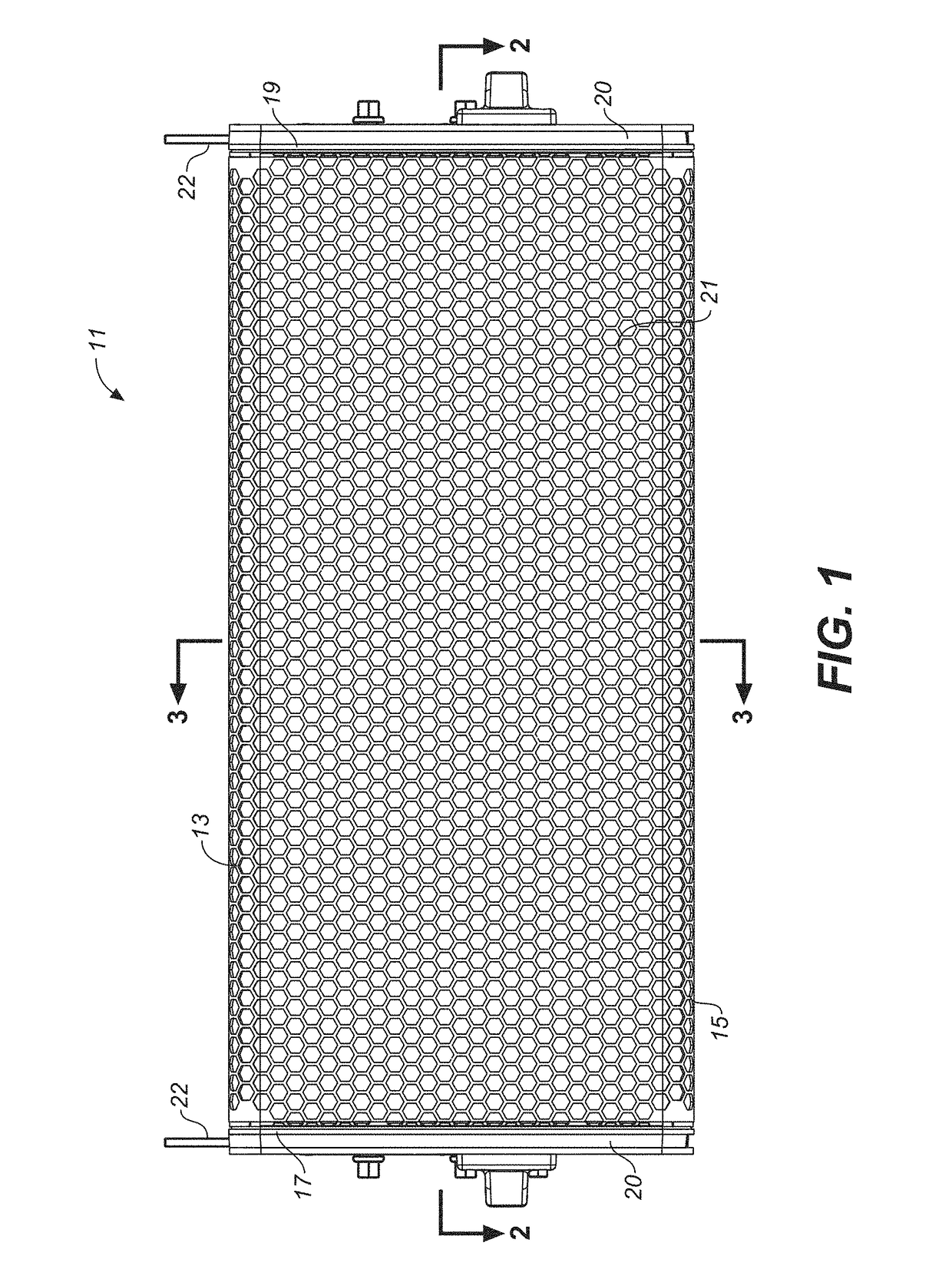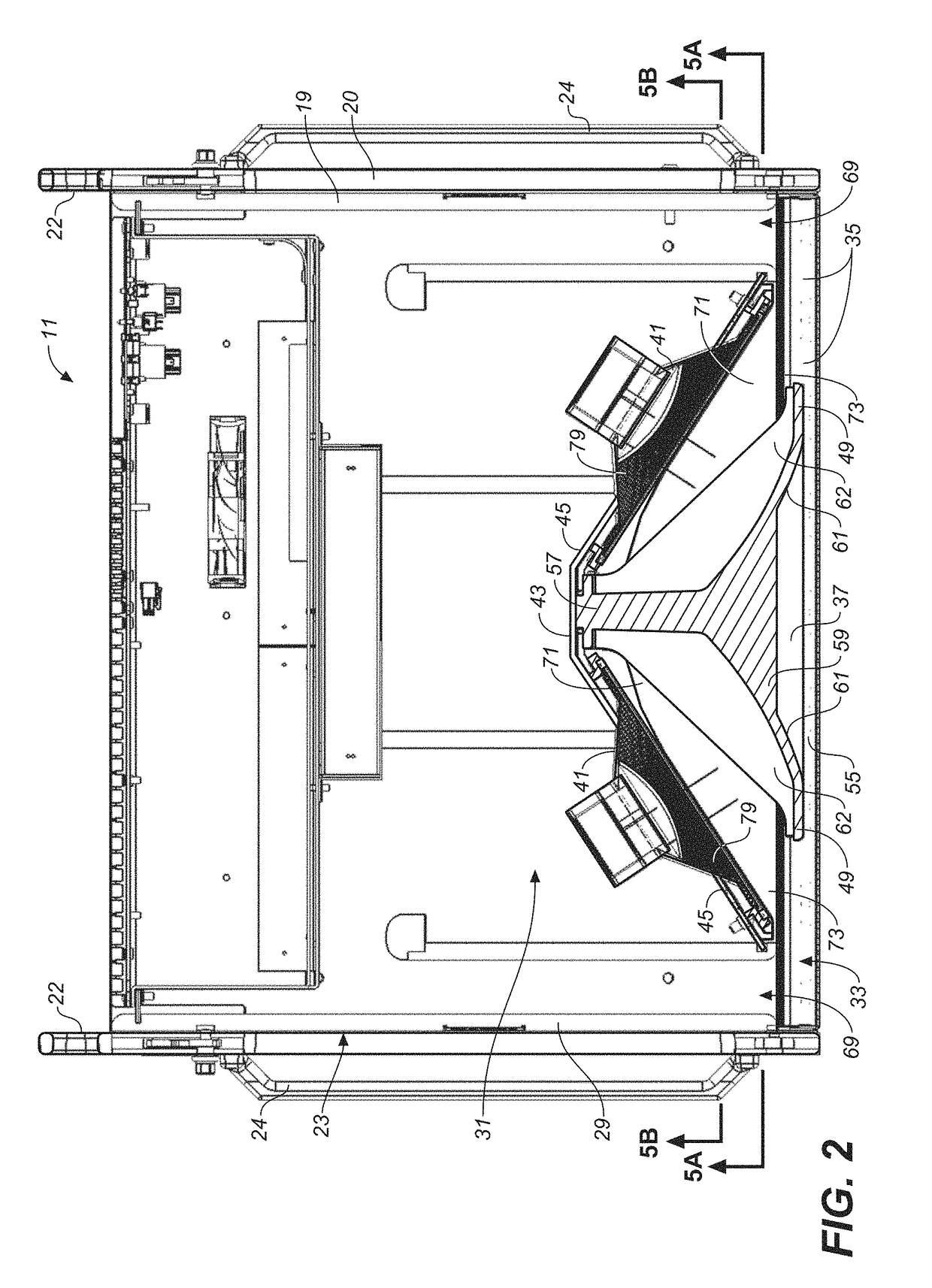Arrayable loudspeaker with constant wide beamwidth
a loudspeaker and beamwidth technology, applied in the direction of transducer details, electrical transducers, electrical apparatus, etc., can solve the problems of inability to achieve constant wide beamwidth of multiple transducers, inconvenient operation of multiple transducers, and inability to achieve constant wide beamwidth over the operating frequency range of loudspeakers, so as to achieve uniform beamwidth, and reduce the effect of nois
- Summary
- Abstract
- Description
- Claims
- Application Information
AI Technical Summary
Benefits of technology
Problems solved by technology
Method used
Image
Examples
Embodiment Construction
[0038]As used herein “low” and “high” to denote frequency ranges are understood to be relative terms that encompass mid-frequency ranges where crossover from low to high frequencies occurs. For example, when referring to a “low frequency” transducer (sometimes referred to herein as “driver”), it will be understood that the transducer will operate at frequencies below crossover and at frequencies extending up into the crossover frequency range. Similarly, when referring to a “high frequency” transducer, it will be understood that the transducer will operate at frequencies that extend down into the crossover frequency range as well as frequencies above crossover. Also, the characterization of a transducer as “high” or “low” does not preclude the possibility that the transducer could produce some acoustic energy outside of its normal operating frequency range, as is discussed below in connection with the low frequency transducers of the loudspeaker described herein.
[0039]An arrayable l...
PUM
 Login to View More
Login to View More Abstract
Description
Claims
Application Information
 Login to View More
Login to View More - R&D
- Intellectual Property
- Life Sciences
- Materials
- Tech Scout
- Unparalleled Data Quality
- Higher Quality Content
- 60% Fewer Hallucinations
Browse by: Latest US Patents, China's latest patents, Technical Efficacy Thesaurus, Application Domain, Technology Topic, Popular Technical Reports.
© 2025 PatSnap. All rights reserved.Legal|Privacy policy|Modern Slavery Act Transparency Statement|Sitemap|About US| Contact US: help@patsnap.com



